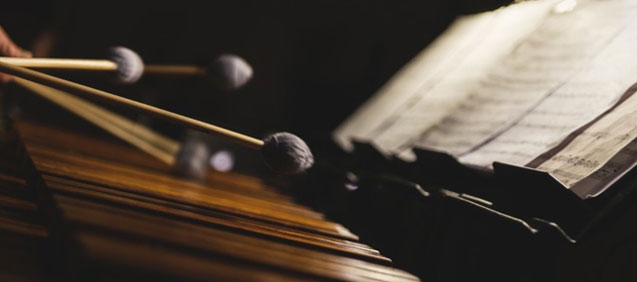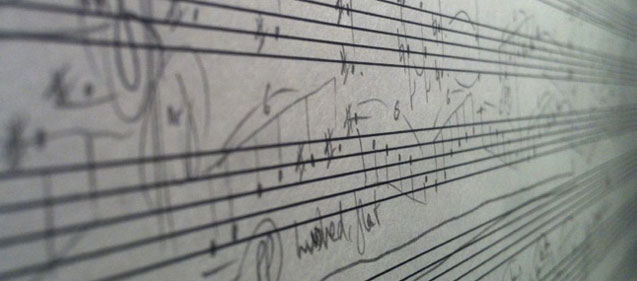|
|

A HIDDEN ORDER
Long-time collaborators Sama Mara, an artist and geometer, and Lee Westwood, a composer,undertake an innovative visual journey that brings together art, music, and geometry, revealing a compelling unity between the worlds of traditional Islamic art and Western contemporary composition. With A Hidden Order, they implement a pioneering theory developed by Mara and based on the scientific relation between sound, colour, and pattern. Their work draws on the fact that the foundational elements of geometric art are also the root principles governing the rhythm and pitch of music, bringing into focus the unexpected correlation between the artistic traditions of Islamic cultures of the past and contemporary mathematics such as fractal geometry.
The artworks presented here are visual expressions of music coming to life in the form of intricate, kaleidoscopic prints with vibrant colours and complex shapes that harmonise sound (music) and space (pattern). Initially, Westwood and Mara meticulously crafted rhythmic structures using the geometric characteristics of triangles, squares, pentagons, and hexagons. Then, Westwood composed 10 instrumental chamber works for a mixed ensemble and recorded these pieces with a quartet. Mara’s computer programme allows for the conversion of live music into Islamic-inspired patterns, producing real-time visualisations. These range from striking studies of single notes to complex and densely polyphonic works, illustrating broader musical narratives through a labyrinth of morphing textures and forms. Within the works, each colour corresponds to a particular note, the density of pattern to the rhythm of the music, and the texture of each individual cell to the timbre, or sound quality, of the note itself. It is through the exploration of this intrinsic relationship of harmony, sound, and space, as evident in music, that a hidden order is revealed.
Geometric art reflects the perfect harmony underlying the unity and order of nature, with its infinite patterns evoking a spiritual resonance. Mathematics is an integral component of Islamic aesthetic, design, and geometric art, going back to the Golden Age of Islam (622-1258 CE). Islamic scholars drew on the works of the ancient cultures of Byzantium, Greece, Rome, and Persia, assimilating and synthesizing this knowledge and adding their own developments, exercising a prolific influence on the development of science in Europe. Within the art world, Arabesque and geometric patterns, as seen in architectural feats such as the Alhambra in Granada, speak to the symmetries and perfect forms of mathematical progressions. This art of pattern reached a level of sophistication unparalleled in its time.
Mara and Westwood create a real-time visual manifestation of this unity, including an interactive platform, live performance and short films, culminating in as a series of giclée prints and a musical album. Reminiscent of the mashrabiya screens found throughout the Middle East, or the endless growth of a fractal dragon, A Hidden Order offers a glorious colourful visual fabric of multiple and dynamic tessellations as rich as the audio score it is created from and as complex as the history of Islamic geometry it draws on.

Here is a short guide to our working process, from the genesis of an idea, to the artworks in their final form.
1. Our journey began with a long period of research, involving the workshopping of simple patterns, rhythms and melodies.
2. Once we had established our musical and visual language, we then drew upon this body of work to compose a suite of 10 pieces for mixed ensemble (flute, cor anglais, marimba/percussion & cello), alongside their visual geometric counterparts – this suite comprises our main collection.
3. These compositions were then rehearsed and professionally recorded by our carefully-selected quartet of musicians. And so the A Hidden Order album was born.
4. Using a bespoke computer programme, built around our theory which enables the conversion of sound into pattern and vice versa, we translated these recordings into their geometric counterparts, allowing the music to take on its physical form.
5. Working from our main collection, we then extracted shorter musical passages in order to create our wider suite of motifs and variations.
6. Finally, our complete collection of prints was expertly made using profes- sional pigment inks and conservation- standard framing methods, to create archival-quality artworks.
|